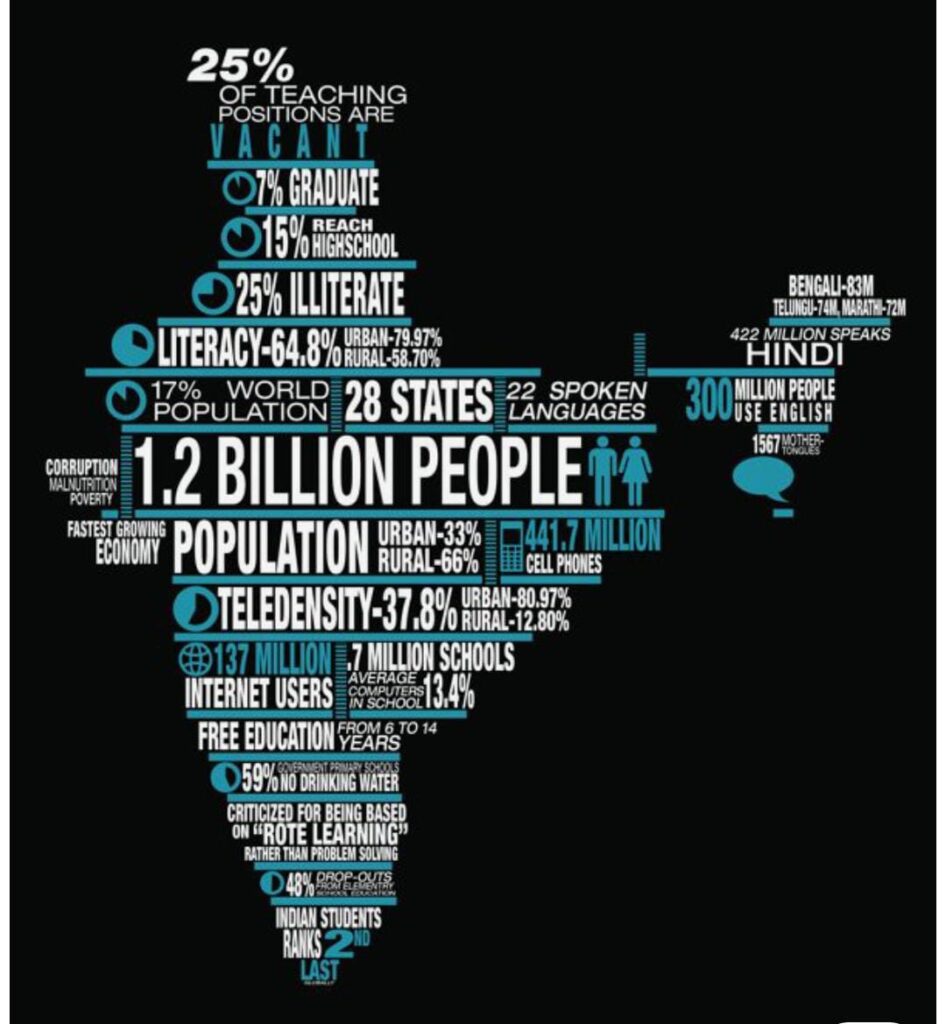
Indian Education System – Past, Present, and the Road Ahead
Introduction
The Indian education system has evolved over centuries – from ancient Gurukuls to modern digital classrooms. As the world progresses, India continues to re-evaluate its learning framework to meet global standards while preserving its rich cultural legacy. In this blog, we explore what the Indian education system truly is, how colonial influence reshaped it, whether it currently meets our needs, and what reforms are still necessary.
1. What is the Indian Education System?
India’s education system is a structured model comprising primary, secondary, and higher education levels governed by various boards like CBSE, ICSE, and state boards. The system is based on the 10+2+3 pattern, i.e., 10 years of schooling, 2 years of higher secondary, and 3 years of graduation.
Education in India is managed jointly by the central and state governments, with the Ministry of Education overseeing national policies. Institutes like IITs, IIMs, and AIIMS have gained global recognition for excellence in science, management, and medicine.
India’s New Education Policy 2020 (NEP) introduced transformative changes like the 5+3+3+4 structure, emphasis on vocational training, and regional language learning, aiming to make education more holistic and practical.
2. How Did the British System of Education in India Impact Traditional Indian Learning and Society?
Before British rule, education in India was deeply rooted in Gurukuls, Madrasas, and Pathshalas, where students learned philosophy, mathematics, astronomy, and ethics through oral traditions and practical experiences.
With the advent of British colonial rule, especially post-Macaulay’s Minute (1835), the focus shifted to English-medium, exam-oriented, rote-learning systems, replacing India’s rich heritage of value-based and skill-based learning.
Impact on Indian society:
Marginalization of traditional knowledge systems like Ayurveda, Vedas, and local crafts.
Prioritization of clerical jobs and bureaucratic roles over entrepreneurship or innovation.
Reduced emphasis on regional languages and cultural diversity.
This colonial system created a disconnect between education and employability, a challenge that still lingers in many areas today.
3. Is the Indian Education System Good?
The Indian education system has strengths and weaknesses.
Strengths:
Strong foundational knowledge in subjects like mathematics and science.
Global recognition of Indian professionals in IT, medicine, and engineering.
Expanding digital learning platforms and EdTech startups like BYJU’S and Unacademy.
Increased gross enrolment ratio (GER) and government initiatives like Right to Education (RTE).
Challenges:
Rote learning culture over critical thinking and creativity.
Outdated curriculum and lack of practical application.
Teacher training gaps and unequal infrastructure between urban and rural schools.
High student pressure leading to anxiety and dropouts.
So, while the system has produced remarkable talent, it needs restructuring to prepare students for the 21st-century workforce.
4. Reforms Needed in the Indian Education System
To truly modernize and democratize education in India, several reforms are essential:
1. Skill-Based Curriculum
Introduce vocational education, coding, financial literacy, and communication skills from an early age.
2. Teacher Empowerment
Regular teacher training, better salaries, and accountability mechanisms are vital for quality education.
3. Inclusive Learning Environment
Focus on special education, gender equality, and regional language inclusion to reduce learning gaps.
4. Reduce Rote Learning
Encourage project-based learning, experiential methods, and analytical thinking over cramming.
5. Better Assessment Systems
Shift from memory-based exams to competency-based evaluations that test understanding and application.
6. Bridging the Digital Divide
Ensure access to devices, internet, and e-learning resources in rural and underserved regions.
7. Strengthen NEP Implementation
Proper execution of the New Education Policy 2020 can revolutionize Indian education if supported by all stakeholders.
Conclusion
The Indian education system stands at a crucial juncture. While it has laid a strong foundation for millions, it must now embrace innovation, inclusivity, and holistic learning to stay relevant in the digital era. By blending the wisdom of the past with the tools of the future, India can truly build a generation ready to lead the world.
FAQs on Indian Education System
Q1. What is the current structure of education in India?
A: The new structure is 5+3+3+4, introduced under NEP 2020, replacing the traditional 10+2 system.
Q2. Is the Indian education system better than foreign systems?
A: It offers strong theoretical knowledge but needs improvements in creativity, skill training, and flexibility compared to countries like Finland or the US.
Q3. What reforms are being made?
A: Key reforms include skill-based learning, vocational training, digital integration, and regional language promotion.
Q4. How can parents help improve education?
A: By encouraging curiosity, reducing academic pressure, and promoting values and practical skills
at home.